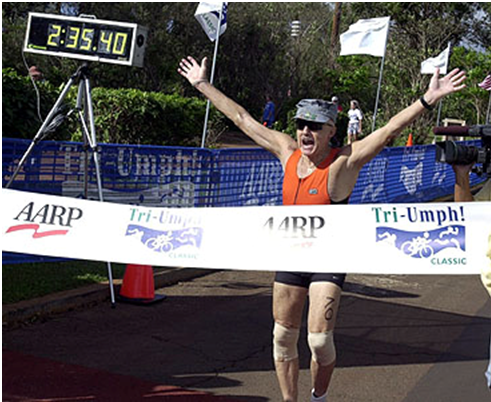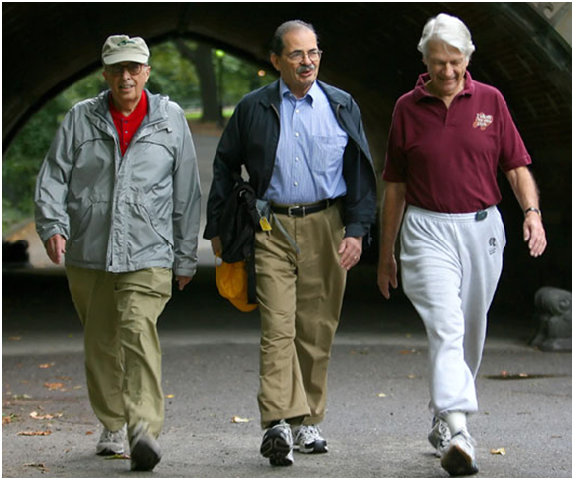By NCPPA
It is easier in many ways to promote physical activities to middle-aged and older populations for a variety of reasons, but how well will they listen? If the messages are tailored precisely, they will listen very well, it turns out, despite the generation’s somewhat skeptical demeanor.
Many seniors are turning attention to themselves after raising their children. Some may turn to physical activity because of medical advice to ward off chronic disease or for weight control. The effects of heart disease, asthma, diabetes, and a host of other conditions are mitigated by regular physical activity.
Others turn to physical activity to fill time or to engage socially with others after children have left home and there’s more free time available. Retirement communities often market themselves as “active communities,” advertising golf courses, tennis courts, a menu of aerobics, dance, yoga/pilates, and other classes that enable seniors to be physically and socially active at the same time.
Marketing to baby boomers, the World War II generation, and older seniors is good business. The wave of children born after that global conflict has been the major marketing influence at each age as they have moved through adolescence and the childbearing years of adulthood and now into their retirement years. We are only in the first few years of baby boomer retirement so the bulk of those born during those years have yet to receive their first retirement checks. As this generation marches inexorably towards their “golden” years, business marketing will be increasingly focused on tailoring their pitches to attract this cohort.
In a recent review of research by the American Association of Retired Person (AARP) into marketing to seniors, Colin Milner, CEO of the International Council on Active Aging, recommended that those who wish to market programs, services, etc. to the burgeoing seniors market do their homework first.
“[This] valuable research reinforces the need to do your homework before setting out on a communication campaign aimed at the mature market. Learn how to speak the language of older adults. Encourage them to be physically active four or more days per week at moderate intensity, and focus on your low-hanging fruit: the planners and tryers. Your success could depend on it.” – Colin Milner
It is human nature to assertively press for individual choices as we age into the second half of our lives. While marketing gurus typically expect us to make economic choices based on how we identify with one sector or another of the consumer population, we humans self-diversify as we age. It becomes much harder for those who would wish to separate us from our dollars to predict accurately what car we’ll buy or what beer we might drink based on our friends’ choices. We just don’t follow the pack the way we once did.
As boomers age, their marketing clout will be felt throughout the economy, and the fitness and wellness sectors won’t be left out. Nearly one quarter of all fitness memberships belong to seniors, and more than 40% of hospital wellness center memberships, according to the International Health, Racquet and Sportsclub Association (IHRSA). Successful marketing to this generation will become a business imperative for many.
AARP’s research drilled down to determine what motivates seniors to engage in physical activity and what obstacles block them from participating. The research found broad differences between those who were retired and those who were not, as well as differences between those who are habitual exercisers already and those who are sedentary. According to Milner, “they found big differences in how specific words were interpeted: Exercise was viewed as hard and difficult while physical activity was not.” Neither those who exercise not those who do not equated the words “physical activity” with exercise, which many thought was too hard and difficult.

AARP Triumph Triathlon Series Was Early National Model
In 2002, AARP was worried about the Surgeon General’s declaration that more than 60 percent of all adult Americans were overweight or obese, with the 50%20 population representing the most sedentary and obese segment of the adult population. Looking at demographic data stating that 80 million people would turn 50 over the following decade, AARP launched the Triumph Classic, a mini (swim-bike-run) triathlon in cities across the country. The series – a 400-meter swim, 20k bike, and 6.2 mile run – grew from six to 15 races in one year, with support from the National Park Service. The final event featured more than 500 senior triathletes competing in a national championship event in – where else? – sunny Florida.
AARP and USA Triathlon, the national governing body for the sport, joined together to offer an 8 week multisport training program that was included as part of the $30 dollar race entry fee to help seniors prepare for the short triathlon event. The low cost and the AARP’s enormous potential for marketing the events around the country to its very own members. Triathlon has grown so extensively in the United States since then that nearly every race has its own senior “waves,” and special senior events no longer are needed.

SilverSneakers Success
SilverSneakers is a wildly popular physical activity program marketed by Healthways to various group retiree health plans nationwide or for those eligible for Medicare. Healthways is the largest independent global provider of well-being improvement solutions.
SilverSneakers is a multi-modal program that offers a fitness center membership that may be used at any participating fitness center, including YMCAs. Program benefits include access to fitnessand conditioning classes, exercise equipment, and customized classes along with online programs for weight loss, smoking cessation, and stress reduction. Participating health insurance companies include the AARP Medicare Supplement, Human, Kaiser Permanente, Bravo Health, some Blue Cross Blue Shield plans and many others. Silver Sneakers targeted the program to seniors to motivate them to make healthier lifestyle choices to reduce future health care costs. According to the Silver Sneakers website, members have lowered sedentary behaviors by 70 percent with nearly half reporting physical activity at least two days per week. With more than 40 major health plans across the country participating in the program, the program reaches more than 2 million people at no cost above usual health insurance premiums.
The AARP Triumph Triathlon Series and the SilverSneakers program are both innovative approaches to heighten physical activity among our aging population. There are countless programs and activities marketed to our seniors, a generally skeptical bunch. By doing your homework first and paying close attention to the words and style of the generational leaders, your marketing campaigns are most likely to resonate with your intended new markets.